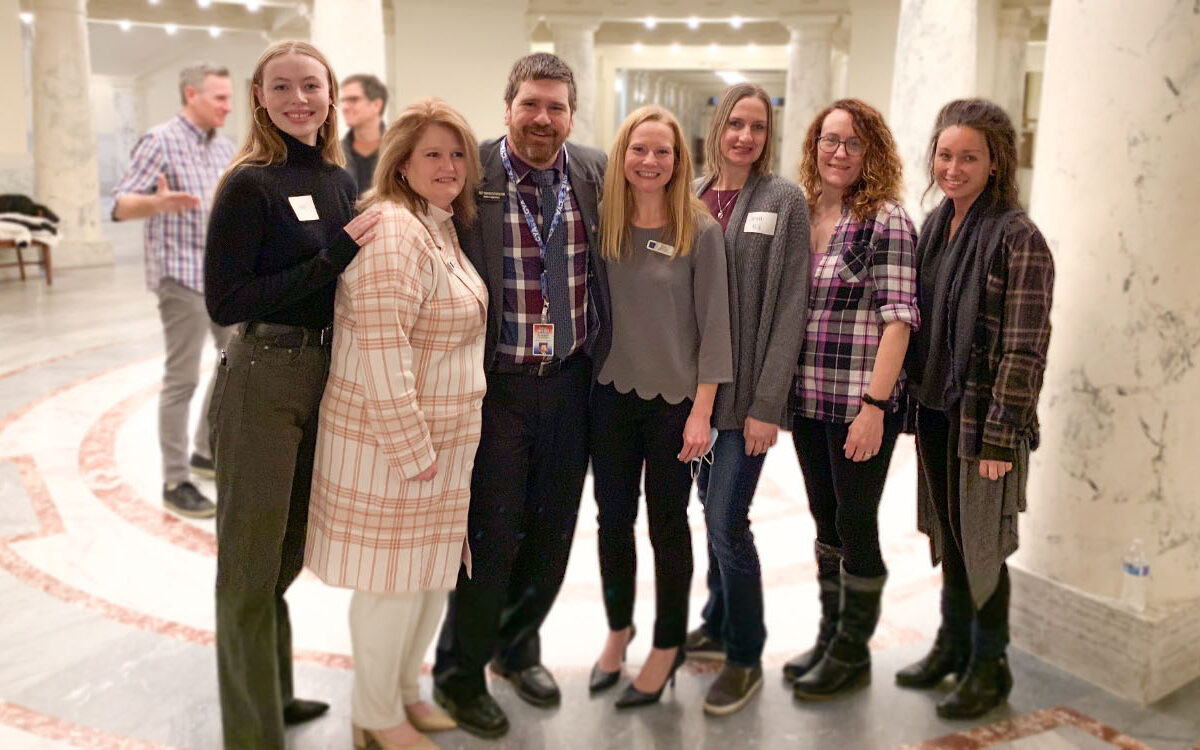
When Idaho Justice Project set out to reduce the number of women experiencing incarceration, they knew the work would be urgent — and uphill. Idaho has the highest rate of incarceration of women in the United States. To reach the national average, Idaho would have to reduce the number of women in prison by a massive 63% (Idaho Justice Project, 2024).
Realizing the complexity of the situation, Idaho Justice Project committed to understanding the root causes, making policy recommendations and pursuing community actions to reduce the number of women in prison while keeping the public safe. While they knew that bringing attention to the issues and highlighting women’s stories would help to spur action, the nonpartisan organization needed the resources to do it.
At the time Idaho Justice Project received their first Mary’s Pence grant, the lack of funding had stalled the work and halted publication of a critical report. “Mary’s Pence funding came at a crucial time for us and made it possible to publish our report, Women’s Incarceration in Idaho: The Problem and the Path Forward. Without the grant, this report would not have happened,” said Erica Marshall, Executive Director and Board President.
The groundbreaking report delves into the unique experiences of justice-impacted women in Idaho and the primary pathways that lead them into the system. These include early experiences of victimization and trauma, mental health and substance use issues often resulting from past trauma, and economic need that leads to “crimes of survival.”
The report notes that prison and reentry programs along with many community intervention and services have been designed for men and often do not fully address the needs of women, the majority of whom are mothers. As one report participant, Danielle, shared: “If I could make an ask to people with the power to change the system, I would ask them to focus on building up women like me, instead of sending us to prison. Prison should be the last resort.”
The research also highlights how difficult it is to get out of the legal system once involved. In the report, we learn about Laurie Erickson, now 58, who was released on parole in 2018. After receiving a voter registration pamphlet, she registered and cast a ballot in the 2020 election. Two years later, in 2022, she was arrested and held in custody for four months for a parole violation until she pleaded guilty to illegal voting and was released. Laurie had received a mailer encouraging her to register and did not know she was ineligible to vote due to her parole status.
Beyond data and reporting, Idaho Justice Project engages in advocacy. In January 2024, these efforts contributed to the passage of the “Clean Slate Law,” which expands criminal record-shielding relief to former justice-involved Idahoans. In a state where more than 1 in 3 adults have a criminal record, many for nonviolent misdemeanor and substance use offenses, the “Clean Slate Law” restores people’s ability to earn a living, secure housing, pursue higher education and support their children and families.
Going even further, Idaho Justice Project launched the Second Chances Committee — a statewide group of nonprofits, attorneys, and justice system stakeholders committed to obtaining record shielding relief for as many eligible Idahoans as possible. The Second Chances Committee, in partnership with community partners, is hosting a series of Second Chances Clinics. At the clinics, individuals can find out whether they are eligible for record shielding relief and, if so, they are then matched to a pro bono attorney who accompanies them through the process.
Idaho Justice Project’s work continues to expand. Coverage in local and state news sources about the report did more than bring visibility and advance conversation about the issues, it also resulted in new funding opportunities for Idaho Justice Project – something that was made possible because of Mary’s Pence grant.
You can support their work by sharing the Idaho Justice Project’s report on Women’s Incarceration in Idaho: The Problem and the Path Forward and raise awareness about the issues by telling the women’s stories.
